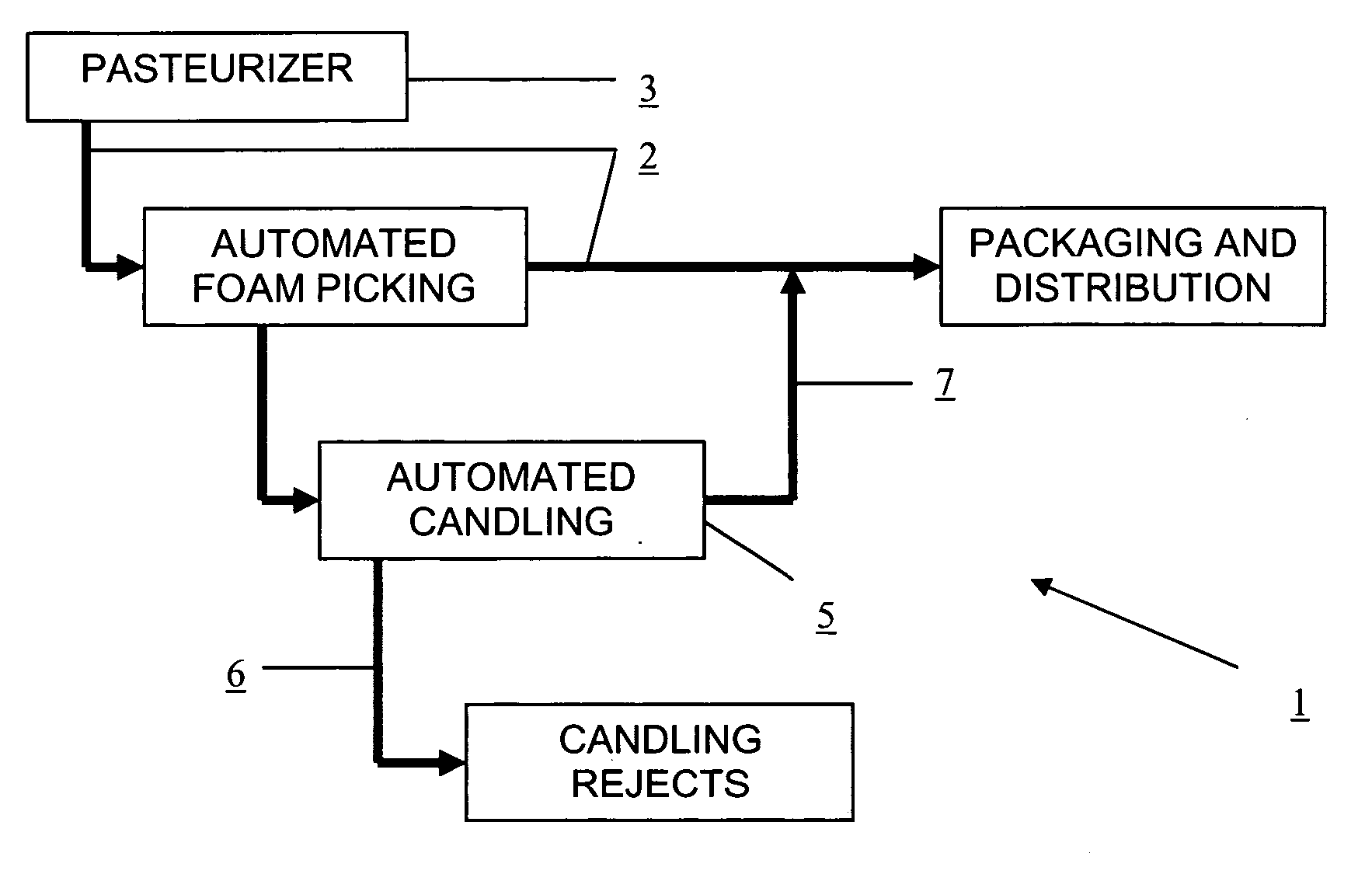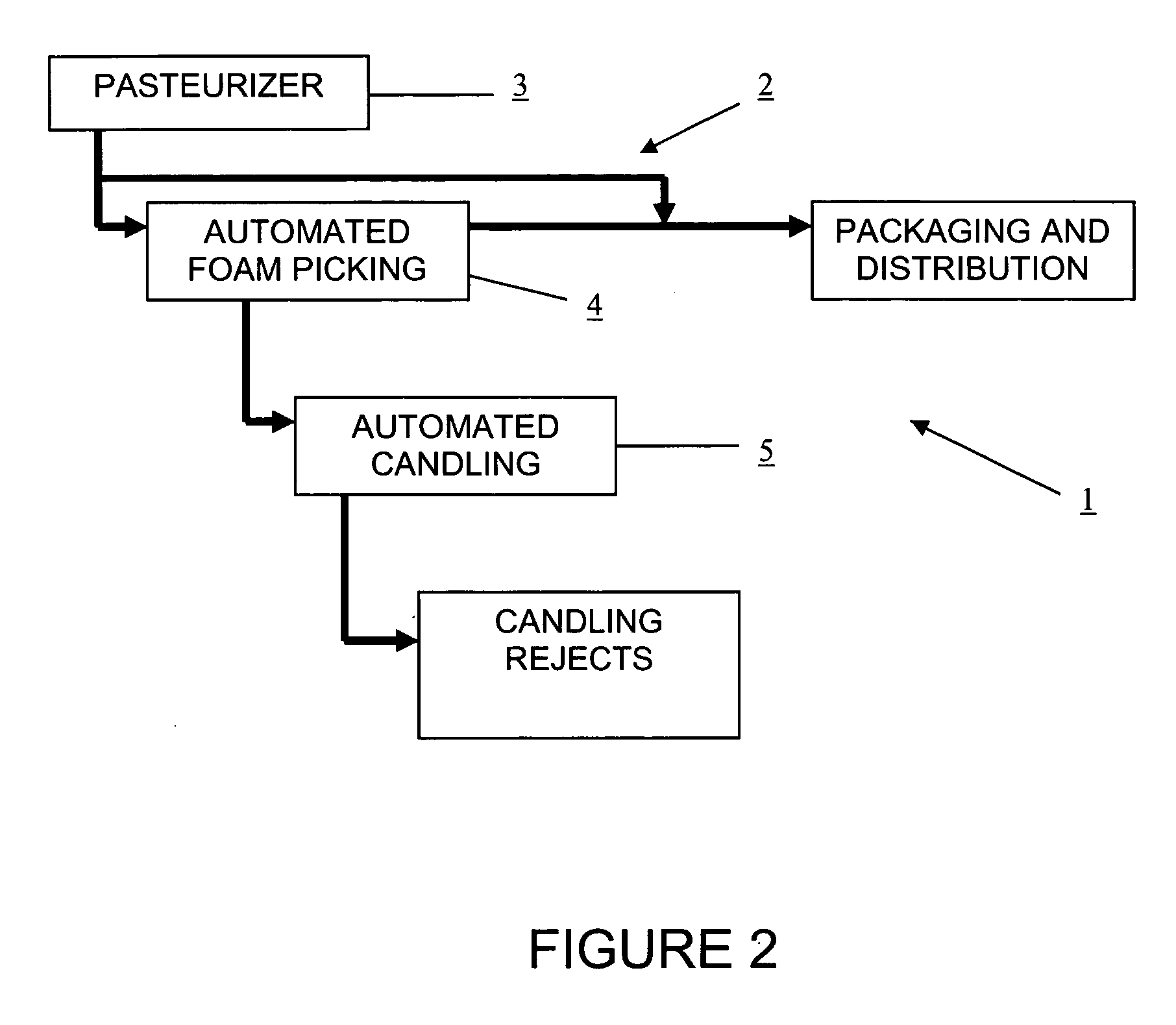Automated bottle inspection appartatus and methods
a bottle and automatic technology, applied in the field of automatic bottle inspection apparatus and methods, can solve the problems of fatigue, less sensitivity, and a lower efficiency of the inspector, and achieve the effect of less operational footprint and higher sensitivity
- Summary
- Abstract
- Description
- Claims
- Application Information
AI Technical Summary
Benefits of technology
Problems solved by technology
Method used
Image
Examples
Embodiment Construction
[0040] Referring now in particular to FIG. 1 of the drawings, an automated bottle inspection and handling system 1, is represented in relation to a high speed bottling line 2, down stream from a tunnel pasteurizer 3. System 1 comprises an automated, high speed, foam picking means 4 in combination with a lower speed automated candling means 5.
[0041] In operation, system 1 is operable for discriminating and sorting on a statistically predetermined basis between those bottles traversing bottling line 2 whose contents include foreign inclusion bodies from those which do not. High speed, foam picking means 4 is operable to inspect and foam pick bottles from all bottles being conveyed on said high speed bottling line 2 and divert foam picked bottles there from.
[0042] Foreign bodies, be they organic or glass, form nucleation points in beer. When a sealed beer bottle is tunnel pasteurized, these nucleation points create a temporary disassociation of the CO2 resulting in an abnormal foam c...
PUM
| Property | Measurement | Unit |
|---|---|---|
| speed | aaaaa | aaaaa |
| compatibility | aaaaa | aaaaa |
| length | aaaaa | aaaaa |
Abstract
Description
Claims
Application Information
 Login to View More
Login to View More - R&D
- Intellectual Property
- Life Sciences
- Materials
- Tech Scout
- Unparalleled Data Quality
- Higher Quality Content
- 60% Fewer Hallucinations
Browse by: Latest US Patents, China's latest patents, Technical Efficacy Thesaurus, Application Domain, Technology Topic, Popular Technical Reports.
© 2025 PatSnap. All rights reserved.Legal|Privacy policy|Modern Slavery Act Transparency Statement|Sitemap|About US| Contact US: help@patsnap.com



